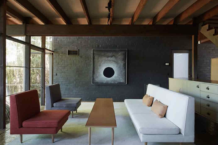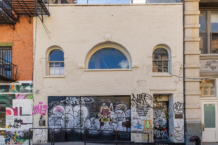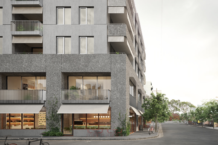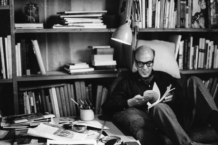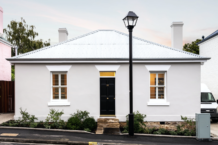In Conversation With Andy Dinan
Arts & Events - by Open Journal
13th May, 2020.
In the wake of the recent devastation COVID-19 has wrought upon Victoria’s creative sector a number of financial lifelines have emerged thanks to the much appreciated largess of a handful of generous philanthropists. Unfortunately, due to closures to major galleries, theatres and public spaces, grants such as The Sidney Myer Fund’s new National Assistance Program for the Arts have been labelled a “drop in a bucket” given the sheer depth of the problem which is further exacerbated by most artists being inelgible for the Jobkeeper payment. We chatted with Melbourne gallerist Andy Dinan of MARS Gallery about the mechanics of the ruination and her thoughts on what we can learn and what we can possibly do in response.
Open Journal: With the impact COVID-19 has wreaked upon the creative industries, how would you suggest we can insulate against a similarly devastating fall-out in the instance of a future pandemic?
Andy Dinan: There are a number of ways we can at least partially insulate against a similarly ghastly moment, although no industry can be immune from the economic downturn and the tragic impacts that result from such a pathogen. The visual arts industry and community is, at least in some ways, better equipped than many other creative pursuits. For one thing most visual artists are psychologically and emotionally used to degrees of solitary creativity – they rarely need to rehearse in an orchestra or a band. Nor do visual artists rely as heavily on the ongoing, regular emotional and financial support of a daily/nightly audience. That said, we as gallerists do rely upon audience flow and interaction and that is obviously not possible at this moment in time. One thing, as an industry, we can do is consolidate, we can share tactics, we can help younger alternative spaces with advice and we can perhaps work more closely with government institutions. It there’s one thing we commercial gallerists love (apart from slight profit) it’s a love of the visual arts and its practitioners. And artists must be paid on time!

OJ: Is there an opportunity here – a silver lining – to future-proof our creative industries and the boundless cultural impact artists have on our public and private spaces?
AD: There is one distinct possibility. Rather than rely on the beleaguered philanthropists and the much-appreciated (but limited) support initiatives across governments’, we need to lobby Property Developers to step up and save the arts and be our white knights – utilise empty shops as pop-up galleries, initiate public art on the sides of buildings, utilise old factories set for development as venues for visual arts extravaganzas. The Business Sector can benefit from such actions as much as the artists and arts industry can – the visual arts, for one, attracts a high-income and prestige audience – from entrepreneurs like Michael Buxton and John Kaldor to celebrities like Nick Cave and Cate Blanchet, to architects, lawyers and surgeons… In other words, the Visual Arts carries status, something the private sector thrives on.

OJ: With lockdowns easing in the coming weeks, the next hurdle for the creative sector is heavily linked to our imploded economy. Physical platforms (galleries, theatres, etc.) have been crippled and many may never recover. What are your thoughts on artists relying more heavily on digital platforms? Virtual galleries, online art auctions etc. Is this something that should be relied on more so that artists can connect with their community and potential buyers (internationally as well) or will that cripple galleries further?
AD: No. While the visual arts sector has done an astonishingly good job of carrying on an on-line presence, people want to see the pencil marks, the application of paint, get my advice eye-to-eye, go through the drawers and stockroom, perhaps meet the artist – they don’t want to lose the experience – digital is fine at night, but clients want to come in face-to-face. You can’t share a glass of wine with your computer… or you can, but really?
OJ: The emphasis on Australia’s sports industry by government ministers and commercial news corporations has not appeared to have shifted in decades, despite the massively increased impact the creative industries has come to play on our economy, urban development and the amazing liveability of our cities. How does this need to be better reflected?
AD: Artists are the new footballers – Art is ahead of fashion – Art tells us where the world is going – it is being reflected already.
Andy Dinan is the Founding Director of MARS Gallery and a Art Centre Melbourne Foundation Board member.



